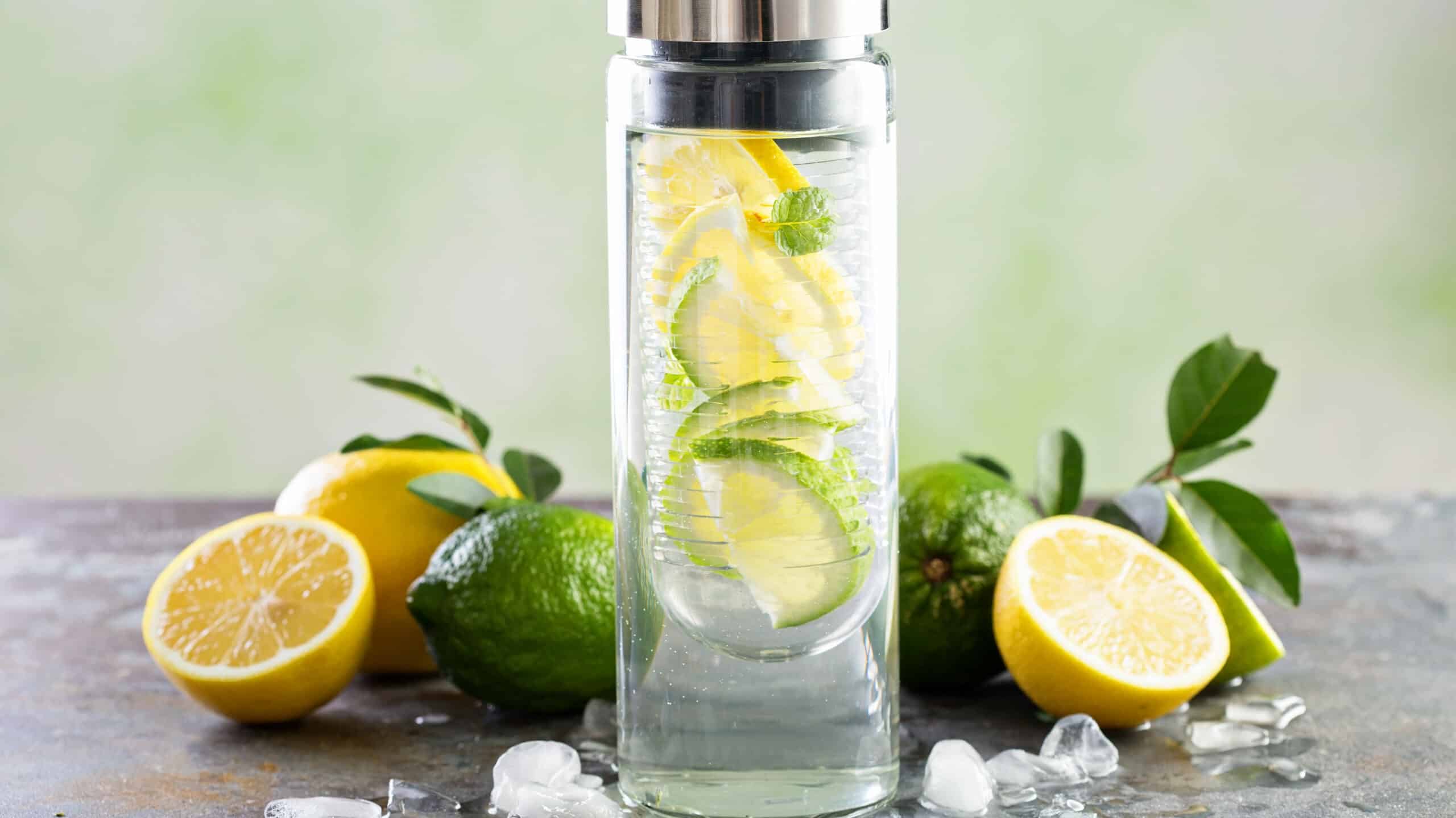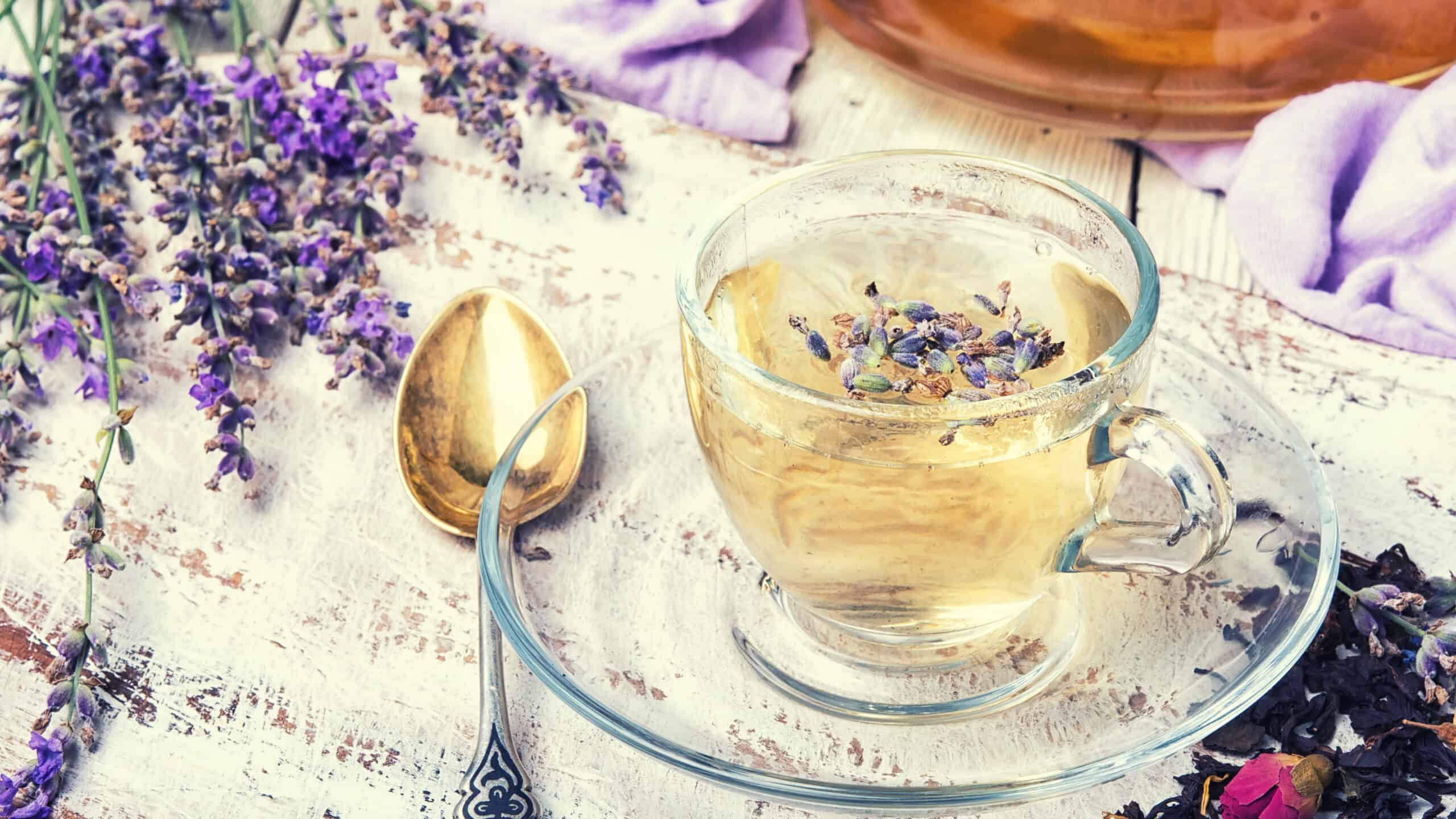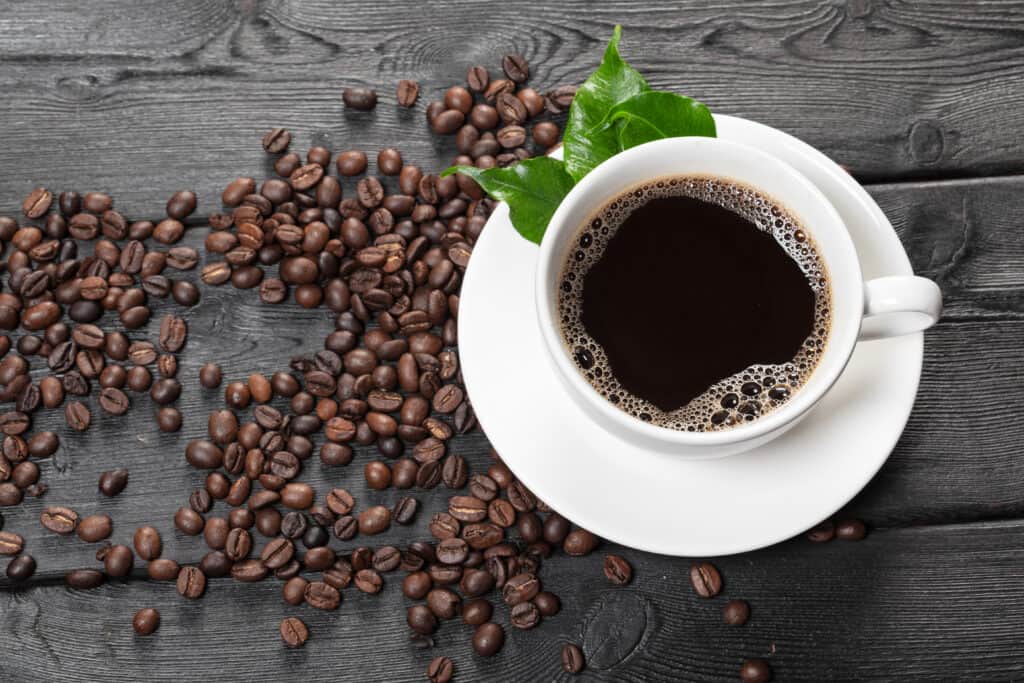Embarking on a Caffeine Detox Guide journey can be a transformative experience for spiritual seekers and those looking to improve their overall well-being. By delving into this guide, you will gain knowledge of the impacts caffeine has on your body, its sources, and how to reduce or cease consumption.
Throughout this post, we will explore both slow and cold-turkey detox methods while weighing their pros and cons. You’ll learn practical tips for implementing a gradual detox plan that suits your lifestyle best. Moreover, the importance of staying hydrated during the detox process cannot be overstated; discover alternative healthy beverage options to keep withdrawal symptoms at bay.
In addition to managing withdrawal symptoms by identifying them early on and adopting effective coping strategies, our Caffeine Detox Guide also offers suggestions for replacing caffeine habits with healthier alternatives such as herbal teas and natural energy boosters. Finally, we will discuss ways to monitor progress in reducing caffeine intake and adjusting your detox strategy when necessary.
Understanding Caffeine Detoxification

More than 90 percent of Americans consume the equivalent of two cups of coffee a day. Caffeine abstinence can lead to symptoms akin to the flu, though it is not life-threatening. A successful caffeine detoxification needs to include detox from all products containing caffeine, not just your basic cup o’ joe.
Effects of Caffeine on the Body
Caffeine is a natural stimulant found in various plants and consumed worldwide for its energizing effects. Regular caffeine intake has been linked to both positive and negative health outcomes, such as increased alertness and improved cognitive function but also disrupted sleep patterns and heightened anxiety levels (caffeine research). Understanding how this substance affects our bodies is crucial when considering embarking on a detox journey.
- Increase in heart rate: Consuming caffeinated beverages can cause an increase in heart rate due to its stimulating properties.
- Blood pressure changes: Some individuals may experience elevated blood pressure after consuming caffeine-containing products.
- Anxiety or jitteriness: High doses of caffeine can lead to feelings of nervousness or restlessness in some people.
- Sleep disturbances: Drinking coffee or other caffeinated drinks close to bedtime might interfere with one’s ability to fall asleep or maintain quality sleep throughout the night.
Common Sources of Caffeine
Apart from your morning cup at local coffee shops, there are many other sources where you might be unknowingly consuming significant amounts of this stimulant. Identifying these hidden sources will help you better manage your caffeine intake and successfully detox from it.
- Energy drinks: Many energy drinks contain high levels of caffeine, which can contribute to overall daily consumption.
- Soda: Some sodas, particularly colas, have notable amounts of caffeine that should be considered when monitoring intake.
- Tea: Both black and green teas contain varying levels of caffeine. Herbal tea is a great alternative for those looking to avoid this stimulant altogether.
- Caffeinated foods: Chocolate contains small amounts of naturally occurring caffeine, especially dark chocolate. Some snacks or supplements may include added sources like guarana or yerba mate extracts.
- Pain relievers and over-the-counter medications: Certain pain relievers and other medications might have moderate amounts of caffeine as an active ingredient designed to enhance their effectiveness (over-the-counter medications). Always read the label before use if you are trying to minimize your exposure during detoxification efforts.
In order to achieve a successful detox from caffeinated products in all forms – not just coffee – it’s essential first to understand how they affect our bodies and identify common sources within our everyday lives. Gaining an understanding of the effects of caffeine on our bodies and its sources in daily life is key to a successful detox, helping reduce any adverse reactions.
Caffeine detox can be a helpful step toward enhancing one’s general health and wellness. It’s important to understand the effects of caffeine on the body and common sources before attempting any type of detox plan. Now, let’s explore different methods for implementing a successful detox plan such as slow vs cold turkey approaches and tips for success.
Slow vs Cold Turkey Detox Methods
When it comes to quitting caffeine, there are two primary approaches: a slow detox and going cold turkey. Both methods have their pros and cons, but researchers Hughes and Griffiths recommend a slow caffeine detox rather than quitting cold turkey. This method involves gradually reducing daily intake over time to allow for an easier transition without severe side effects.
Pros and Cons of Each Method
- Slow Detox:
- + Less severe withdrawal symptoms
- + Easier transition for the body and mind
- – Requires more patience and planning
- Cold Turkey:
- + Faster elimination of caffeine from the system
- – More intense withdrawal symptoms
- – Higher risk of relapse due to discomfort
Tips for Implementing a Slow Detox Plan
If you choose to pursue a slow caffeine detox, consider these tips for creating an effective plan:
- Determine your current daily caffeine intake by tracking consumption from all sources (coffee, tea, energy drinks, etc .)
- Create realistic goals based on your starting point; this could involve cutting back by one cup per week or switching out caffeinated beverages with decaf options.
- Avoid replacing coffee with other high-caffeine alternatives like energy drinks or over-the-counter medications containing stimulants.
- Monitor your progress and adjust the plan as needed to maintain a steady decrease in caffeine consumption.
- Seek support from friends, family, or online communities who are also working on reducing their caffeine intake. Sharing experiences can provide motivation and encouragement throughout the process.
Overall, there are pros and cons to both slow and cold-turkey detox methods. When making a decision, it is vital to consider what your individual needs are in order to determine which detox method will be most beneficial. Maintaining hydration during detoxification is essential for minimizing withdrawal symptoms, so it’s crucial to be aware of what other healthy drink alternatives are accessible.
Staying Hydrated During Detox

When you stop drinking coffee or tea, you will need to hydrate yourself in another way to prevent fatigue and headaches. Drink at least eight 8-oz. glasses (64 ounces) of water per day to maintain proper levels of hydration during your caffeine detox journey. Staying hydrated is crucial in combating withdrawal symptoms and ensuring a smoother transition away from caffeinated beverages.
Importance of Hydration in Combating Withdrawal Symptoms
Hydration plays a vital role in reducing the severity of caffeine withdrawal symptoms, such as headaches, irritability, and fatigue. These symptoms are often caused by the body’s reaction to the absence of caffeine, which it has grown accustomed to through regular consumption. Drinking sufficient amounts of H2O can help expel toxins from your body and keep it functioning at its peak.
Other Healthy Beverage Options
Besides water, there are several other healthy beverage options that can help keep you hydrated during your caffeine detox process:
- Herbal teas: Herbal teas like chamomile, peppermint, or ginger provide soothing effects without any added caffeine content.
- Fruit-infused waters: Adding fruits like lemon slices or berries into your water not only enhances its taste but also provides additional vitamins and minerals for overall health benefits.
- Natural energy drinks: Opt for natural alternatives such as coconut water or green smoothies instead of commercial energy drinks that contain high levels of sugar and artificial ingredients along with their caffeine content.
- Sports drinks: If you’re engaging in physical activities during your detox, sports drinks can help replenish electrolytes lost through sweating. However, choose those with low sugar content and avoid caffeinated versions.
By incorporating these healthier alternatives into your daily routine, you’ll be able to maintain proper hydration levels while also reducing the likelihood of experiencing severe caffeine withdrawal symptoms. Remember that moderation is key; overconsumption of any beverage can lead to negative health effects.
Staying hydrated during detox is essential for managing withdrawal symptoms and should not be overlooked. To further support the body’s healing process, it is important to understand how to manage common withdrawal symptoms associated with caffeine detox.
Managing Withdrawal Symptoms

As with any substance dependence, there may be some discomfort when discontinuing use; however, managing these potential side effects can make the process more manageable and increase chances for success in achieving a full detox from caffeinated products. In this part, we’ll go over techniques to help with the potential side effects of ceasing caffeine consumption and what signs one might experience.
Identifying Common Withdrawal Symptoms
Caffeine withdrawal symptoms vary from person to person but generally include:
- Headaches
- Fatigue or drowsiness
- Irritability or mood swings
- Anxiety or nervousness
- Inability to concentrate or focus
- Difficulty sleeping (insomnia)
- Muscle pain or stiffness
These symptoms usually begin within twelve to twenty-four hours after quitting caffeine and can last anywhere between two days up to nine days. It’s essential to monitor your body’s reactions during this time so you can address any issues that arise promptly.
Strategies for Coping With Withdrawals
There are several ways you can manage caffeine withdrawal symptoms effectively:
- Drink plenty of water: As mentioned earlier, staying hydrated is crucial in combating fatigue headaches associated with withdrawals.
- Take over-the-counter medications: Moderate amounts of pain relievers like ibuprofen and acetaminophen help alleviate headaches and muscle pains caused by sudden cessation of regular coffee consumption.
- Engage relaxation techniques: Practicing yoga meditation and deep breathing exercises can aid in reducing anxiety and stress levels during the detox process.
- Maintain a healthy sleep schedule: Establishing a consistent bedtime routine helps improve quality and lessen insomnia symptoms experienced while quitting caffeine.
- Incorporate physical activity in daily life: Regular exercise releases endorphins, which act as natural mood boosters to combat irritability and depression often felt throughout the withdrawal period.
By implementing these coping strategies into your caffeine detox plan, you’ll be better equipped to manage any discomfort that arises and ultimately achieve a successful cleanse from caffeinated products.
Managing withdrawal symptoms is a challenging but necessary step in order to transition away from caffeine successfully. With the correct techniques and approaches, transitioning away from caffeine can be made easier. Substituting our customary practices with better choices can help us build new morning rituals that will be beneficial for both body and mind.
Replacing Caffeine Habits With Healthier Alternatives

One key aspect when attempting a successful caffeine cleanse is finding suitable replacements that provide similar benefits without causing dependency issues later down the line. This could involve exploring different beverages, such as herbal teas and energy-boosting foods, instead of relying solely on stimulants like those found in most coffees or sodas.
Herbal Teas and Natural Energy Boosters
Rather than reaching for your usual morning coffee, consider trying herbal teas, which are naturally caffeine-free and offer various health benefits. Some popular options include:
- For a calming effect and to reduce stress levels, consider chamomile tea in the morning.
- Ginger tea: Aids in digestion and provides an invigorating flavor to wake you up in the morning.
- Mint tea: Offers a refreshing taste while also promoting healthy digestion.
- Rooibos tea: Rich in antioxidants, rooibos has been linked to improved heart health and reduced inflammation.
In addition to herbal teas, there are several natural energy boosters that can help keep you alert throughout the day without resorting to caffeinated products. These include:
- B vitamins: Found in whole grains, leafy greens, nuts, seeds, and legumes, these essential nutrients are crucial in converting food into energy.
Replacing caffeine habits with healthier alternatives can be difficult, but the rewards of improved well-being are worth it. By monitoring progress and adjusting your detox plan accordingly, you will have an easier time transitioning to a healthier lifestyle.
Monitoring Progress and Adjusting Your Detox Plan

Tracking your caffeine intake, noting any withdrawal symptoms, and assessing the success of your detox is essential for a successful experience. Regularly evaluating the effectiveness of your plan allows you to make necessary adjustments that will help maintain motivation throughout the process.
Methods for Tracking Caffeine Consumption
To monitor your daily caffeine consumption, consider using a caffeine tracking app that can accurately calculate total intake amounts automatically. Additionally, keeping a journal where you record all caffeinated foods and beverages consumed during the day can also be helpful in staying accountable to yourself.
- Caffeine tracking apps: These apps allow users to input their daily caffeinated products and calculate total intake amounts automatically.
- Journals: Writing down every instance of caffeine consumption provides a visual representation of habits that may need adjustment as well as an opportunity for reflection on patterns or triggers leading up to increased use.
Signs That Indicate It’s Time to Adjust Your Detox Strategy
Paying attention to specific signs during your detox journey can indicate whether it’s time to adjust your strategy or not. Some common indicators include persistent withdrawal symptoms such as headaches or fatigue despite reducing regular caffeine intake gradually; feeling overwhelmed by cravings after cutting back too quickly; finding difficulty in sticking with new routines established without morning coffee; or noticing little improvement in overall well-being since starting the detox process. If any of these situations arise while following through with plans laid out initially within this guide, don’t worry. It’s essential to remain flexible and open-minded about making changes as needed based on personal experiences during this time.
- Persistent withdrawal symptoms: If you’re still experiencing significant discomfort after several weeks of reducing caffeine intake, consider adjusting your detox plan by slowing down the pace or seeking additional support from a healthcare professional.
- Overwhelming cravings: Should you find yourself struggling with intense urges for caffeinated products despite cutting back gradually, it may be necessary to reevaluate your approach and make adjustments accordingly.
- Inability to maintain new routines: Struggling with establishing healthier habits in place of regular coffee consumption could indicate that further exploration into alternative options is required such as trying different herbal teas or incorporating moderate amounts of decaf coffee into daily rituals instead.
Maintaining awareness throughout the entire caffeine detox process is vital for long-term success. By monitoring progress regularly and being willing to adjust strategies when necessary, individuals can overcome dependence on caffeinated products while improving overall well-being significantly. Remember always to stay patient, persistent, and positive during this journey towards a healthier lifestyle.
Frequently Asked Questions Caffeine Detox Guide
How long does it take your body to detox from caffeine?
The time it takes for your body to detox from caffeine varies depending on factors such as individual metabolism and the amount of daily consumption. Generally, most people can expect withdrawal symptoms to last between 2-9 days, with peak intensity occurring around 20-51 hours after quitting.
What is the best way to detox caffeine?
The best way to detox from caffeine depends on personal preference and circumstances. Some individuals may prefer a gradual reduction in intake (slow method), while others might choose cold turkey cessation. Both methods have pros and cons; finding what works best for you will ensure a successful detox process.
Is it worth doing a caffeine detox?
A caffeine detox can be beneficial for those experiencing negative side effects or dependency on the substance. It helps improve sleep quality, reduce anxiety levels, decrease blood pressure, and restore natural energy levels without relying on stimulants.
What is the coffee 1-week rule?
The coffee 1-week rule refers to taking a break from consuming caffeinated beverages like coffee for one week every few months. This practice allows your body’s tolerance level towards caffeine to reset itself so that you can enjoy its benefits more effectively when reintroduced into your routine.
What happens to your body when you quit caffeine?
Quitting caffeine leads initially causes withdrawal symptoms such as headaches, fatigue, irritability, and difficulty concentrating but eventually results in improved sleep quality, reduced anxiety, and better overall health. The body’s natural energy levels are restored, and dependency on stimulants decreases.
Conclusion
The Caffeine Detox Guide provides a comprehensive plan for reducing or eliminating caffeine intake. By understanding the effects of caffeine on the body, implementing a slow detox method, staying hydrated, managing withdrawal symptoms, and replacing old habits with healthier alternatives, it is possible to break free from caffeine dependence successfully.
Remember that progress takes time and patience, but by committing to this process, you’ll be well on your way toward improved health and well-being!





